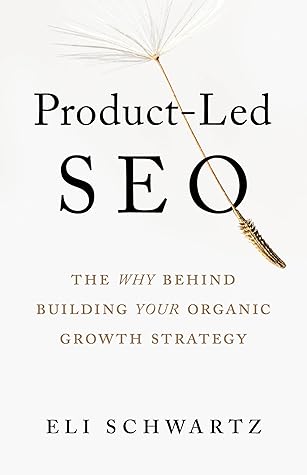More on this book
Kindle Notes & Highlights
by
Eli Schwartz
Read between
January 14 - January 23, 2023
Pages should link to important pages but also to other pages that seem to be random. And those pages should link back to important pages and to other random pages. Wherever a crawler enters, it will eventually find that new page, as there many pathways to get there.
some important things to look at in Google Search Console.
Knowing the ratio of brand to non-brand traffic is critical when assessing the current progress of SEO efforts.
Checks for year-over-year stats should be done for brand and other important queries as well. There may not always be something to do about the information (yet), but it’s important to at least know it.
As a canonical link is only a suggestion to Google, knowing whether those suggestions have been accepted by Google is very useful information. It is helpful to sort through URLs receiving traffic to ensure they match the expected URLs and note if there is a canonical issue.
some errors that are important are schema, crawling, and definitely anything related to robot files. If you find an error that is fixable, for example, missing schema (technical markup that allows you to describe features or products in structured data) or a page that is blocked to search crawlers, that is certainly something worth addressing immediately.
In fact, duplicate content is an issue, but there is no actual penalty applied to anything that is deemed to be duplicate. From a user perspective, Google wants to make sure all content in a search result is completely unique to other results, so a user doesn’t see a results page with seven to ten listings of the exact same content.
Having duplicate content on a site is usually not an issue that could hurt a website, and it should not be avoided. The exception to this rule is if an entire website is duplicated from another site or so much of a website is duplicate, it could fall into the realm where the Panda algorithm might think the website is of too low quality to be included in Google’s index.
The biggest concern when updating a site is that search engines will no longer be able to find the old pages where they used to be and also have a hard time finding the new pages. This will have a double impact of lost visibility on old pages and not recovering that visibility on new pages. Therefore, the goal in any update is to maintain the structure of the old and nimbly pass users and crawlers on to the new.
The best practice to achieve this goal is to set up permanent redirects from the old page location to the new URL. Technically, this is referred to as a 301 redirect, which will force browsers as well as crawlers to update the cache for the new URL. (This is in contrast to a 302 redirect, which is considered to be just a temporary redirect.)
Before launching the new build of a website, the entire site should be crawled, and it should be verified the old URLs are correctly redirected to new URLs.
SEO is an optimization channel, not a demand-creation channel. SEO efforts improve the visibility of a website when the demand is already there. In a defined niche, there could be very narrow demand that will see significant growth of organic traffic when the site is first optimized for search, but then it will only grow at the rate of demand growth for the product and brand.
Business buyers generally take a little longer, and content should be crafted differently to reflect this fact. As we’ve talked about before, it’s important to know the expectations of each type of user and the breakdown in the types of content that should be created for each use case.
Google ranks websites on mobile optimization the same way it does on a desktop. The nuances between SEO for desktop and mobile are in how users interact with search and websites after they click.
From a search perspective, websites that rank highly for a query on desktop are going to rank equally on a mobile screen; however, there are fewer results, meaning a number-five slot on mobile is essentially like being on page two of results.
This organizational structure is because SEO is often viewed as a Marketing function. Tasks are structured as campaigns relying on other Marketing contributions, such as Content and Design. Technical tasks like building or launching a page happen somewhere else in another divisional org structure within the company.
we should measure SEO the same way any product is measured: by adoption and engagement. A good metric is growth in impressions on search pages. Obviously, clicks are important too, but the clicks are a result of on-page structure, which is not necessarily SEO itself.


